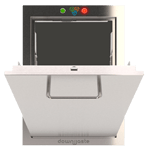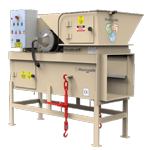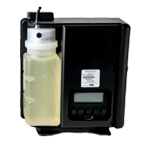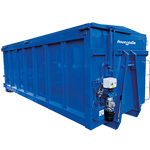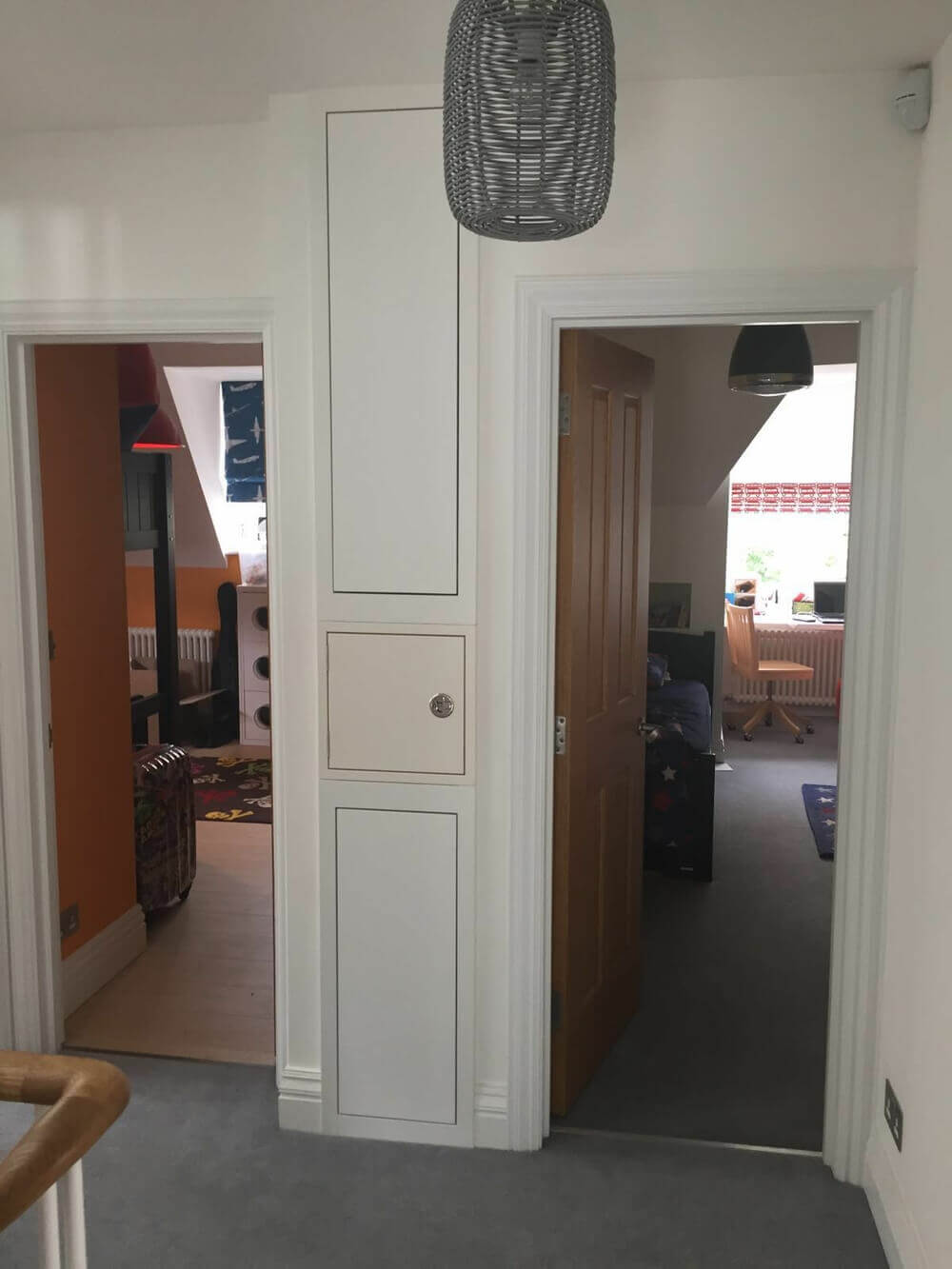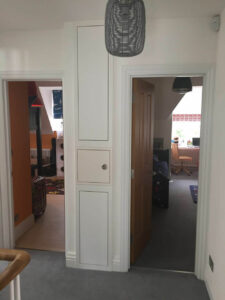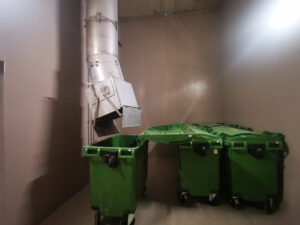In the grand scheme of architectural design, one might overlook the humble laundry chute. Yet, it is this very element that holds the potential to transform the domestic landscape, easing task of laundry with a clever blend of practicality and elegance. This blog post shall delve into the intricate art of designing and incorporating a laundry chute into your renovation plans, providing a comprehensive guide for those who seek to imbue their homes with this cool feature.
The laundry chute, a simple yet useful pipe system, has been a staple in multi-story dwellings for since the beginning of 20th century, offering an efficient means of transporting laundry from upper floors to lower ones. However, its incorporation into the private homes is rather new and requires careful planning and consideration. From understanding local building codes to achieving a practical correct design, each step is crucial in ensuring the successful implementation of a laundry chute.
- Understanding the Basics: What is a Laundry Chute?
- The Legalities and Building Codes Surrounding Laundry Chutes
- Designing Your Laundry Chute: Location, Size, and Material Considerations
- Installation Process: A Step-by-Step Guide to Incorporating a Laundry Chute
- Maintenance and Safety Tips for Your Laundry Chute
The Basics: What is a Laundry Chute?
A laundry chute, is essentially a vertical pipe that utilizes the simple principle of gravity to transport dirty laundry from upper levels of a home directly to a lower level laundry room, thus eliminating the need for cumbersome baskets and tedious trips up and down stairs.The concept of the laundry chute has its roots firmly planted in practicality and efficiency. In times past, such a feature was considered a luxury, but today it is increasingly seen as a clever solution to a common household chore.
The design of a laundry chute is typically straightforward. An opening, often fitted with a small door, is placed in a convenient ergonomic height on the upper floors. This leads to a duct that travels directly directly into the laundry room. The simplicity of this design belies the convenience it offers, transforming a mundane task into a near-effortless act.
However, despite their usefulness, laundry chutes are not without controversy. Some building codes have restrictions regarding their installation due to safety concerns. Children, being naturally curious creatures, may be tempted to explore these mysterious passages, leading to potential accidents. Therefore, careful consideration must be given to their placement and design.
The Legalities and Building Codes Surrounding Laundry Chutes
Before embarking on the installation of a laundry chute, it is prudent to familiarize oneself with the legalities and building codes that may govern such an endeavor. Not all jurisdictions view these conveniences in the same light, and some even prohibit their implementation outright due to safety concerns.
Building codes are established by local authorities to ensure the structural integrity and safety of buildings. They cover a wide range of aspects, from electrical wiring to fire safety measures. When it comes to laundry chutes, these codes dictate the size, location, and materials used for the chute. For instance, some codes require that laundry chutes be constructed of non-combustible materials to prevent the spread of fires.
In addition to local building codes, homeowners must also consider national regulations. In the United States, for example, the National Fire Protection Association (NFPA) provides guidelines on the construction and use of laundry chutes. According to NFPA 82, “Standard on Incinerators and Waste and Linen Handling Systems and Equipment,” laundry chutes must have self-closing doors and be designed to prevent the accumulation of lint or other combustible materials.
It’s not just about fire safety, though. The International Residential Code (IRC), which is adopted by many U.S. states, stipulates that any opening for a laundry chute must be at least 4 inches in diameter but no more than 12 inches(300mm), and it must be equipped with a protective cap when not in use. Typically, a laundry chute is 300mm, and equipped with fire-rated side hinged self-closing hoppers that bears a keyed lock. This is to prevent accidents, especially those involving children who might find the chute an enticing place to explore.
In conclusion, while a laundry chute can be a significant convenience for homeowners, it’s crucial to ensure compliance with all relevant building codes and regulations. These codes exist to protect inhabitants from potential hazards associated with poorly designed or improperly installed chutes. Therefore, it’s always recommended to consult with a professional before installing a laundry chute in your home.
Designing Your Laundry Chute: Location, Size, and Material Considerations
When it comes to designing a laundry chute, several factors must be considered. The location, size, and material of your laundry chute are all essential considerations that can greatly affect the functionality and safety of this household feature.
The location of the laundry chute is crucial. Ideally, it should be situated in a convenient place where laundry tends to accumulate, such as bathrooms or bedrooms. However, one must also consider the layout of the house and the proximity to the laundry room. The chute should provide a direct path to the laundry area without interfering with other structural elements of the home.
Size is another significant factor when designing a laundry chute. The chute needs to be large enough to accommodate bulky items like bed linens and towels, but not so large that it becomes a safety hazard. As previously mentioned, some building codes specify minimum and maximum dimensions for laundry chutes. Generally, a diameter of 300mm is considered adequate for most households.
Material selection for your laundry chute is equally important. The material needs to be durable and able to withstand the wear and tear of daily use. Moreover, it should be smooth to allow laundry to slide down easily and not accumulate within the chute. Metal, particularly stainless steel is a popular choice due to its durability and slick surface.
In addition to these primary considerations, one should also think about the design of the chute’s intake doors. These doors should be easy to operate but also secure enough to prevent accidents. Furthermore, they should integrate seamlessly with the interior decor of the home. You can find examples of Downwaste Laundry Chutes in the Projects page.
In conclusion, designing a laundry chute requires careful planning and consideration of various factors. By paying attention to the location, size, and material of your chute, you can ensure that it serves its purpose effectively while also adhering to safety standards.
Installation Process: A Step-by-Step Guide to Incorporating a Laundry Chute
Installing a laundry chute may seem like an overwhelming task, but with a little planning and the right tools, it can be accomplished with relative ease. Here is a step-by-step guide to help you incorporate a laundry chute into your home.
The first step in the installation process involves security measures. Do not try to install a laundry chute without identifying the risks. Wear a safety belt, and put on safety helmet. If you are installing the chute to an existing house, remember that this requires careful analysis of your home’s layout, considering factors like convenience, proximity to the laundry room, and structural elements of the house. It might be beneficial to involve a professional builder or architect at this stage to ensure you choose the best possible location.
Once the location has been determined, the next step is to cut out the opening for the chute. This should be done with extreme precision, keeping in mind the size of the chute and ensuring that the opening aligns perfectly from top to bottom. Always remember to prioritize safety during this process; use appropriate protective gear and tools to prevent any accidents.
With the opening ready, the third step involves assembling and installing the chute. Depending on the material chosen, this could mean welding together metal sheets or connecting PVC pipes. The chute should fit snugly into the opening, and any gaps should be sealed off to prevent laundry from getting stuck or the spread of potential fires.
Next, install the intake doors at each level of the chute. These doors should be easy to operate and secure enough to prevent accidental falls. They should also blend seamlessly with the interior decor of your home without projecting outside. It’s important to ensure that the doors are installed at a convenient height for its purpose. Start from installing the chute from the laundry room and going upper levels one by one. Make sure the telescopic pipes are provided for perfect alignment at each floor. Fix the pipes with supporting brackets to the wall, and secure with suitable rawl plugs. Make sure the laundry chute is firmly fixed and can withstand mechanically. Then fix the doors, make sure the doors are with keyed handles and self-closing mechanism. It may be more convenient to fix to doors inside the drawer counter-top instead of hanging it to the wall. Make sure no more than 45-degree slopes there are, otherwise, most towels won’t make it to the laundry room.
The final step in the installation process is to test the functionality of the chute. Run some laundry through the chute to check if it slides down smoothly and lands in the intended location. If there are any issues, they should be addressed immediately to ensure the chute operates efficiently and safely.
In conclusion, while the process of installing a laundry chute requires careful planning and some handyman skills, it can be a valuable addition to your home. By following this step-by-step guide, homeowners can incorporate a laundry chute that not only adds convenience but also enhances the efficiency of household chores.
Maintenance and Safety Tips for Your Laundry Chute
Keeping your laundry chute in optimal condition requires regular maintenance and adherence to safety guidelines. This not only ensures the efficiency of the chute but also prevents potential accidents. First, never leave it unlocked. Keep the keys out of reach of children.
Second, it is not easy but important to regularly clean your laundry chute. Over time, lint and debris can accumulate inside the chute, which can lead to blockages or even fire hazards. Cleaning the chute involves sending a brush down from the top and using a vacuum cleaner at the bottom to remove any loose debris. It is recommended to do this cleaning process at least once in a year, or more frequently if heavy use of the chute is made.
Thirdly, make sure to regularly inspect the structure of the chute and its components. Check for any signs of wear and tear, such as rusting in metal chutes. The doors of the chute should also be checked for self-closing, positive latching and fire intumescent strips, and any mechanical damages or malfunctions. If any issues are detected, they should be promptly addressed to prevent further damage or potential accidents.
Fourthly, educate all members of the household about the importance of closing the chute door after use. They should never throw flammable items, solid object, or liquids down the chute. These can cause serious fire risks or damage the interior of the chute. Always check the contents of the laundry before tossing it down the chute and avoid using it as a trash disposal system.
Lastly, remember to follow building codes and regulations related to laundry chutes. These codes are designed to ensure the safe and efficient operation of the chute. Non-compliance could lead to legal issues and compromise the safety of your home.
In conclusion, maintaining your laundry chute and adhering to safety tips can extend its lifespan and ensure a safer environment for your household. Regular cleaning, inspections, safe usage practices, and adherence to building codes are key in achieving this.In conclusion, the incorporation of a laundry chute into your home’s design is a task that requires careful planning and consideration. Yet, the rewards are manifold: not only does it add a touch of elegance to your dwelling, but it also brings about a level of convenience that can transform your daily routine.
Remember, understanding the basics, adhering to building codes, thoughtful design, and proper installation are crucial steps in this process. A well-designed and installed laundry chute can last for many years, providing a seamless and efficient system for managing your laundry.
